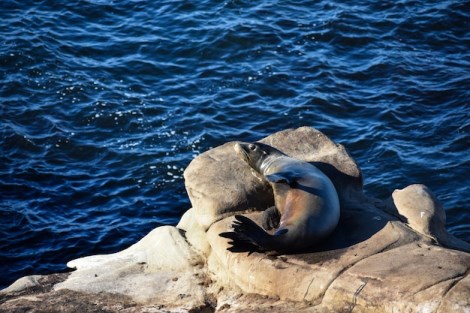10 Fascinating Facts about the Galapagos Islands

The Galapagos Islands are a unique paradise of biodiversity.
Charles Darwin’s visit to the Galapagos Islands inspired his theory of evolution.
The Galapagos Islands are home to numerous endemic species found nowhere else on Earth.
The giant tortoises of the Galapagos Islands can live up to 150 years.
The Galapagos Islands are a living laboratory of evolution.
The islands’ volcanic landscapes are a testament to their fiery past.
The marine iguanas of the Galapagos Islands are the only iguanas in the world capable of swimming.
The Galapagos penguin is the only species of penguin found north of the equator.
The waters surrounding the Galapagos Islands are a haven for marine life, including sharks, whales, and dolphins.
The Galapagos Islands were not inhabited by humans until the late 19th century.
The islands’ fragile ecosystems are carefully protected to preserve their natural wonders.
The Galapagos Islands offer unparalleled opportunities for wildlife photography.
The blue-footed boobies of the Galapagos Islands are famous for their unique courtship dance.
The Galapagos Islands are a UNESCO World Heritage site.
The islands’ isolation allowed the development of unique species and ecosystems.
The Galapagos Islands served as a base for pirates and whalers in the past.
The islands’ landscapes range from lush forests to barren lava flows.
10 Fascinating Facts about the Galapagos Islands part 2
The Galapagos Islands are a popular destination for scuba diving and snorkeling.
The islands are named after the giant Galapagos tortoises that call them home.
The Galapagos Islands are located about 600 miles west of mainland Ecuador.
The islands have a rich cultural history, with influences from indigenous people and colonizers.
The flightless cormorants of the Galapagos Islands are one of the rarest bird species in the world.
The famous finches of the Galapagos Islands have different beak shapes adapted to specific diets.
The islands’ volcanic activity continues to shape and reshape their landscapes.
The Galapagos Islands are a living testament to the power of natural selection.
The islands are a haven for birdwatchers, with over 50 species of birds.
The Galapagos Islands are home to the world’s largest population of waved albatrosses.
The islands’ unique geology attracts scientists and researchers from around the world.
The Galapagos Islands have been described as a biological wonderland.
The islands were named a national park by the Ecuadorian government in 1959.
The Galapagos Islands offer various activities such as hiking, kayaking, and wildlife tours.
The islands’ black volcanic sands create picturesque beaches.
The Galapagos Islands experience a mild climate throughout the year.
The islands’ landscapes provided inspiration for artist and naturalist William Beebe.
The hammerhead sharks of the Galapagos Islands are a sight to behold for divers.
The Galapagos Islands are a hotspot for scientific research on evolution and conservation.
The islands are a testament to the power of adaptation and resilience in nature.
The Galapagos Islands are a popular destination for eco-tourism.
The islands’ unique wildlife has attracted famous visitors like David Attenborough and Jacques Cousteau.
The Galapagos Islands have strict regulations to protect their fragile ecosystems.
The islands’ lava tunnels are fascinating geological formations to explore.
The Galapagos Islands are famous for their stunning sunsets and starry nights.
The islands’ turquoise waters are teeming with colorful fish and coral reefs.
The Galapagos Islands are a living classroom for studying ecology and environmental science.
The islands’ isolation from mainland influences has helped preserve their unique biodiversity.

